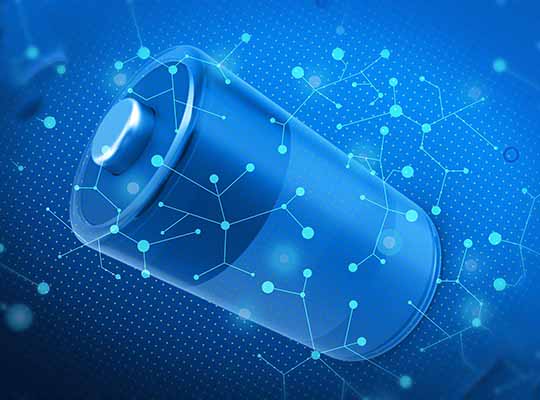PUNE, India — ReportsnReports added Global and China Lithium-ion Battery Anode Material Industry Report, 2021-2026 Research Report to its online database. Lithium battery is primarily composed of cathode materials, anode materials, separator, and electrolyte. Anode materials, one of vital raw materials, make up 5%-15% of lithium battery cost. Currently, global lithium battery anode materials industry is concentrated in China and Japan, which occupy more than 95% of anode materials sales worldwide. Japanese enterprises are in a leading position technologically while China boasts obvious cost advantages in anode materials production because of abundant graphite mineral resources.
From 2016 to 2020, China’s anode material shipments jumped year by year, hitting 365,000 tons in 2020 with the growth rate exceeding expectations, mainly thanks to the substantial growth in the demand for lithium batteries in various fields around the world. Driven by the demand from new energy vehicles and energy storage batteries, China’s production of anode materials is expected to register a high CAGR of 30-35% in upcoming years, and then reach 295 kilotons in 2026.
At present, the most widely used anode materials are still natural graphite and artificial graphite. From the perspective of product structure, the market share of artificial graphite further increased to 84% in 2020. Affected by the replacement of main domestic cylindrical battery models for shipment and the suspended upgrade of the high nickel system for square power batteries, other anode materials represented by silicon-based anode materials failed to achieve the expected growth with a declining market share. The drop in the proportion of natural graphite was mainly because mainstream battery companies purchased mixed materials of natural and artificial graphite in 2020, which reduced the procurement of pure natural graphite to a certain extent.
The price of anode materials has kept falling since 2017Q4. On the whole, the price of artificial graphite has dipped slightly faster than that of natural graphite. This trend will be more obvious as the industry’s graphite capacity is released substantially. However, by integrating resources and technological advantages, top companies will maintain their profitability and still see considerable growth. Currently, the coke price tends to go down, which will help anode material companies reduce the cost of raw materials to offset the pressure brought by the price drop.
From the perspective of market competition, the combined market share of TOP3 companies in China’s anode material market decreased from 57% in 2019 to 53% in 2020, marking a lower concentration in the anode material market, because the demand for various anode materials in the second half of the year was huge, but the capacity of top enterprises was insufficient, which pushed up the capacity utilization rate of the second- and third- echelon companies to swell. In addition, companies engaged in low-power communication energy storage lithium batteries and the like with low performance requirements and high price sensitivity preferred to purchase from the second- and third- echelon anode material companies.
The industry presents a pattern of “three big companies and three small companies”. The first echelon includes three major companies: the natural graphite leader Shenzhen BTR New Energy Materials, the artificial graphite tycoon Shanghai Shanshan Technology and the high-end artificial anode material giant Jiangxi Zichen Technology, of which the latter two pose duopoly in the artificial graphite market, closely followed by Shenzhen BTR New Energy Materials with high-quality customers. Each of them shipped more than 40,000 tons of anode materials in 2019. The second echelon consists of three small companies — Hunan Shinzoom Technology, Dongguan Kaijin, and Shenzhen XFH Technology, with the respective shipments of over 10,000 tons in 2019. Although Dongguan Kaijin ranks among the top three by shipments, it still falls into the second echelon due to its heavy reliance on a single major customer and low-end products.
The capacity of Shenzhen BTR New Energy Materials, Shanshan Technology, Jiangxi Zichen Technology, and Dongguan Kaijin totaled 490,000 tons in 2020 when the industry’s output hit 365,000 tons. In 2021, the penetration rate of new energy vehicles soars, and major anode material companies plan to expand production by over 1 million tons. Among them, Shenzhen BTR New Energy Materials will add 270,000 tons, Shanshan Technology 260,000 tons, Jiangxi Zichen Technology and Dongguan Kaijin 200,000 tons each. Sufficient capacity can meet the fast-growing demand.
The report highlights the following:
- Market size and forecast, competitive landscape, new anode materials development, etc. of global lithium-ion battery anode materials industry;
- Policies, market size and forecast, competitive landscape, price trend, etc. of China’s lithium-ion battery anode materials industry;
- Market size, competitive landscape, imports & exports, price trend, etc. of global and China’s raw material industries (graphite, silicon carbide, lithium titanate, graphene, etc.) of anode materials;
- Market size, competitive landscape, analysis and forecast for the demand for anode materials, etc. of global and China’s lithium battery industries;
- Profile, anode materials business, operation, etc. of 25 global and Chinese anode materials manufacturers;
- Profile, lithium titanate materials business, operation, etc. of 3 global and Chinese lithium titanate materials producers.











